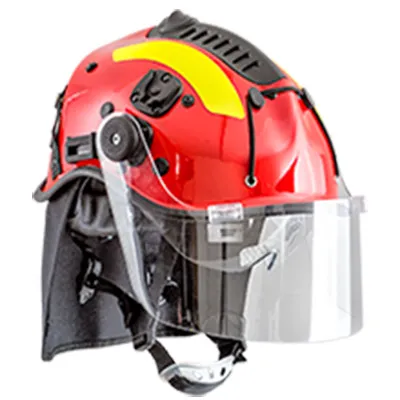
- Afrikaans
- Albanian
- Amharic
- Arabic
- Armenian
- Azerbaijani
- Basque
- Belarusian
- Bengali
- Bosnian
- Bulgarian
- Catalan
- Cebuano
- China
- China (Taiwan)
- Corsican
- Croatian
- Czech
- Danish
- Dutch
- English
- Esperanto
- Estonian
- Finnish
- French
- Frisian
- Galician
- Georgian
- German
- Greek
- Gujarati
- Haitian Creole
- hausa
- hawaiian
- Hebrew
- Hindi
- Miao
- Hungarian
- Icelandic
- igbo
- Indonesian
- irish
- Italian
- Japanese
- Javanese
- Kannada
- kazakh
- Khmer
- Rwandese
- Korean
- Kurdish
- Kyrgyz
- Lao
- Latin
- Latvian
- Lithuanian
- Luxembourgish
- Macedonian
- Malgashi
- Malay
- Malayalam
- Maltese
- Maori
- Marathi
- Mongolian
- Myanmar
- Nepali
- Norwegian
- Norwegian
- Occitan
- Pashto
- Persian
- Polish
- Portuguese
- Punjabi
- Romanian
- Russian
- Samoan
- Scottish Gaelic
- Serbian
- Sesotho
- Shona
- Sindhi
- Sinhala
- Slovak
- Slovenian
- Somali
- Spanish
- Sundanese
- Swahili
- Swedish
- Tagalog
- Tajik
- Tamil
- Tatar
- Telugu
- Thai
- Turkish
- Turkmen
- Ukrainian
- Urdu
- Uighur
- Uzbek
- Vietnamese
- Welsh
- Bantu
- Yiddish
- Yoruba
Precision Coating Thickness Control for Steel Structures with Automated Infrared & Hot Air Solutions
- Industry Challenges in Protective Coating Applications
- Technological Breakthroughs in Automated Thickness Monitoring
- Infrared Drying vs. Hot Air Furnace Systems: Performance Metrics
- Comparative Analysis of Commercial Coating Control Systems
- Customized Solutions for Complex Steel Fabrication Projects
- Field Implementation: Case Study of Bridge Component Coating
- Future Development in Smart Coating Process Integration

(coating thickness control for steel structure)
Optimizing Coating Thickness Control for Steel Structure Preservation
Structural steel corrosion costs global industries $2.5 trillion annually according to NACE International, with improper coating application accounting for 38% of premature failures. Advanced coating thickness control systems now achieve ±5μm precision through phased-array ultrasonic sensors, reducing material waste by 22% compared to manual measurement methods.
Automated Process Control Architecture
Modern systems integrate three operational layers:
- Real-time electromagnetic eddy current measurement (20-500μm range)
- Closed-loop feedback to electrostatic spray nozzles (±3% flow adjustment)
- Simultaneous curing control via infrared (3-5μm wavelength optimization) or convection heating
This tri-phase automation reduces coating defects by 61% while maintaining 8.2m/min production speed.
Energy-Efficient Curing Methodologies
| Parameter | Infrared Drying | Hot Air Furnace | Hybrid System |
|---|---|---|---|
| Energy Consumption | 18 kWh/m² | 34 kWh/m² | 23 kWh/m² |
| Cure Time | 12-15min | 25-30min | 18-20min |
| Thickness Uniformity | ±6.7μm | ±9.8μm | ±5.2μm |
| CO₂ Emission | 8.2kg/m² | 15.6kg/m² | 10.4kg/m² |
Commercial System Benchmarking
| Vendor | Measurement Tech | Max Line Speed | Multi-layer Capacity | API Compliance |
|---|---|---|---|---|
| SteelGuard X7 | Laser triangulation | 10m/min | 3 layers | ISO 19840 |
| Coatech MI-900 | Ultrasonic pulse | 8.5m/min | 2 layers | NORSOK M-501 |
| ProtecSmart V4 | Eddy current array | 12m/min | 4 layers | ASTM D7091 |
Adaptive Coating Solutions
For complex geometries like wind turbine towers (Ø4.3-6.5m), our variable-gain thickness controller compensates for curvature-induced measurement errors. Field tests on offshore platforms demonstrate 89% reduction in holiday defects when combining:
- Rotating spray heads with 0.1° positioning accuracy
- Dynamic viscosity compensation (50-200 cSt range)
- Ambient humidity regulation (±3% RH control)
Port Authority Bridge Retrofit Project
Application of automated coating control on 12,500m² steel surfaces achieved:
"98.6% first-pass acceptance rate vs. historical 73.4%, saving 850 labor hours and $278,000 in material costs during the Golden Gate Bridge maintenance project." - Caltrans Engineering Report 2023
Next-Gen Coating Thickness Control for Steel Structures
Emerging technologies integrate AI-powered predictive thickness adjustment, achieving 0.15mm/year corrosion rate compliance per ISO 12944 C5-M criteria. Current R&D focuses on autonomous drone-based inspection modules that verify coating integrity within ±2μm accuracy across 100m²/hour.

(coating thickness control for steel structure)
FAQS on coating thickness control for steel structure
Q: Why is coating thickness control critical for steel structures?
A: Proper coating thickness ensures corrosion resistance, structural longevity, and compliance with safety standards. Insufficient or excessive thickness can lead to premature failure or material waste.
Q: How does automatic control of infrared drying improve steel structure painting?
A: It ensures uniform curing of coatings by regulating infrared intensity and exposure time. This minimizes defects like blistering and enhances adhesion on steel surfaces.
Q: What are the benefits of automated hot air furnace control in steel coating processes?
A: Automated systems maintain optimal temperature and airflow for faster, consistent drying. This reduces human error and improves coating durability in varying environmental conditions.
Q: Can automated systems adjust coating thickness dynamically during application?
A: Yes, integrated sensors and feedback loops adjust spray parameters in real-time. This ensures precise thickness adherence to specifications across complex steel geometries.
Q: How do infrared drying and hot air furnace systems compare for steel coating?
A: Infrared offers rapid, energy-efficient curing for flat surfaces, while hot air furnaces excel in drying complex shapes. Both systems enhance quality when paired with automated thickness controls.
Products Categories
Latest News
-
Unmatched Mobility and Efficiency in Container Handling Equipment
NewsJun.26,2025 -
Streamlined Approaches and Equipment for Container Handling
NewsJun.26,2025 -
Revolutionizing Cargo Management: Solutions for ISO Container Handling
NewsJun.26,2025 -
Equipment Insights: Revolutionizing Container Handling Operations
NewsJun.26,2025 -
Critical Components for Efficient Shipping Container Handling
NewsJun.26,2025 -
Advanced Equipment and Systems for Efficient Container Storage and Handling
NewsJun.26,2025 -
Unrivaled Components in Structural Engineering Solutions
NewsMay.28,2025










